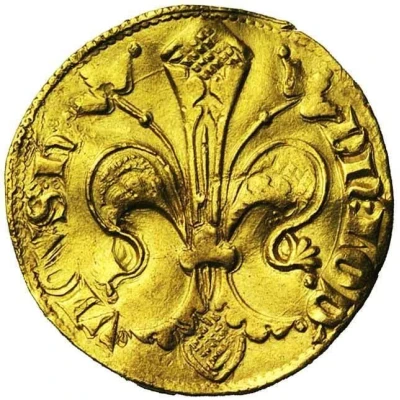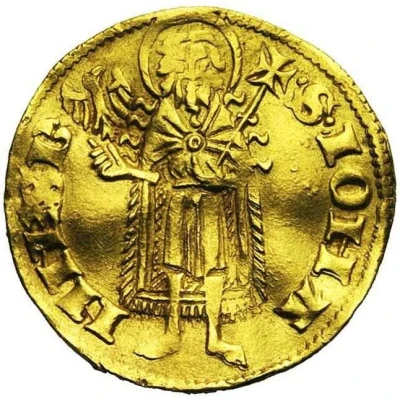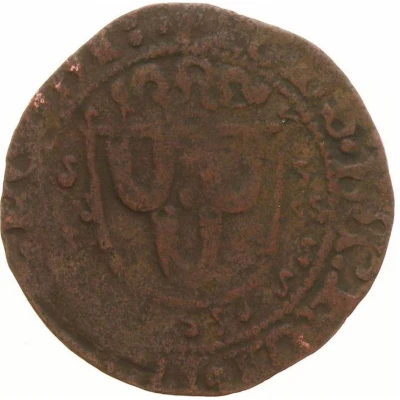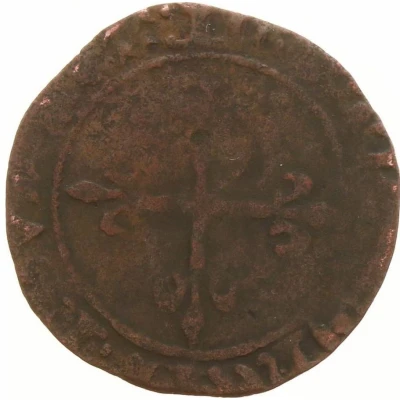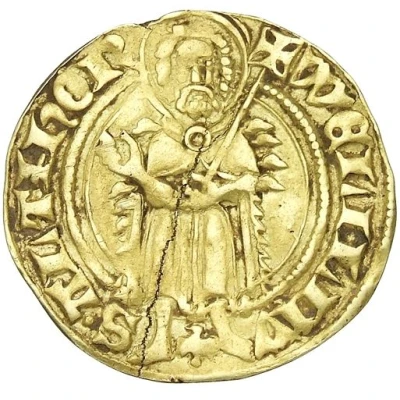
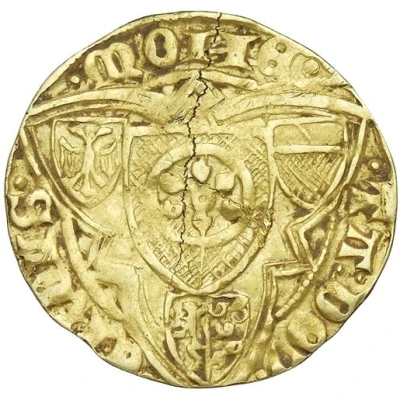

Gulden "St. Jansgulden" - William VII Rhineland Monetary Union ND
| Gold | 3.27 g | 21 mm |
| Issuer | Lords of Horn (Horn, Dutch States) |
|---|---|
| Lord | William VII (Willem VI) (1405-1428) |
| Archbishop | Frederick III of Saarwerden (Friedrich III von Saarwerden) (1370-1414) Werner of Falkenstein (1388-1418) |
| Period | Rhineland Monetary Union (Rheinischer Münzverein) (1385-1583) |
| Type | Standard circulation coin |
| Years | 1405-1414 |
| Value | Florin (Gulden) |
| Currency | Groot (-1506) |
| Composition | Gold |
| Weight | 3.27 g |
| Diameter | 21 mm |
| Shape | Round (irregular) |
| Technique | Hammered |
| Orientation | Variable alignment ↺ |
| Demonetized | Yes |
| Updated | 2024-10-06 |
| Numista | N#383102 |
|---|---|
| Rarity index | 100% |
Reverse
Trilobe around 4 shields with the coats of arms of the 4 Princes-elector of the Rhineland Monetary Union. In the last coat of arms the Bavarian diamonds were replaced with the horns of Horn. Latin text between full circles surrounding.
Script: Latin (uncial)
Lettering: mONETA DO VERDIS
Lettering (regular font): MONETA DO VERDIS
Unabridged legend: Moneta de Verdis
Translation: Money of Weert.
Comment
The shields represent the four electors of the Rheinische Münzverein, namely the archbishops of Cologne, Mainz, Trier, and the Count Palatine, established in 1385.
In the center of the trefoil is a large shield surrounded by three smaller ones. The large shield with the wheel is the coat of arms of the Archdiocese of Mainz. The small coat of arms with the double-headed eagle in the upper left represents the coat of arms of Archbishop Frederick III of Saarwerden (1371-1414), followed by that of Werner von Falkenstein (1388-1418), Archbishop of Trier. Finally, at the bottom, there is the divided shield of the Electoral Palatinate, heraldically with the Palatine lion on the right and the Bavarian lozenge on the left, with the Bavarian half being impaled.
The lozenges in the upper quarter are replaced by the three horns of Horn. The obverse of the coin is a imitation of the types of Werner of Trier, and the reverse is based on those of Conrad II of Mainz (1390-1396).
Interesting fact
One interesting fact about the St. Jansgulden coin is that it was minted during a time of great economic and political change in the region. The Rhineland Monetary Union, which was established in 1385, aimed to create a uniform currency system across several states in the Rhineland region, and the St. Jansgulden coin was one of the coins minted as part of this effort. The coin's design, featuring an image of St. John the Baptist, was meant to symbolize the unity and stability of the region. Despite the coin's small size, it was made of gold, indicating the wealth and prosperity of the region at the time.
